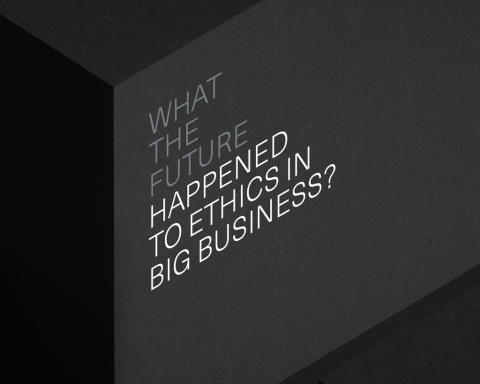Written by
Published
Category
Key topics
Sweden’s number one tourist attraction has a lot to teach businesses about embracing paradox and making customers say “Wow!”, argues Dr Jonathan Pinto, Assistant Professor of Organisational Behaviour
In a corporate world that prizes data (especially big data) and business leaders who focus almost exclusively on an alphabet soup of quantitative metrics – EVA, EPS, ROI, ROE, RONA, ROCE, P/E Ratios, NEP, etc – words, especially quaint ones like paradox and intangible, appear to have no place. But the Icehotel says otherwise.
And in a hospitality industry that excels in creating ever bigger, taller, smarter and shinier glass-and-chrome monoliths, whose interiors are almost unfailingly replete with marble, gold-leaf, lapis lazuli and crystal, a hotel that is only one storey tall and built entirely of one mundane material should be an aberration. However, the Icehotel is anything but.
The Icehotel is the world’s first and largest hotel built entirely out of ice and snow. Every winter it attracts more than 50,000 visitors to its remote location in Swedish Lapland (200km north of the Arctic Circle), despite the weather being at its coldest and harshest.
It is Sweden’s most popular tourist destination and has been designated one of the country’s “Seven Wonders”. It was the subject of an entire episode in National Geographic’s Megastructures documentary series, which described it as “without doubt a frozen wonder of the world” and “one of the most amazing hotels on the planet”. Unsurprisingly, it was also a an episode on BBC’s recent documentary series Amazing Hotels: Life Beyond the Lobby.
By being designed to die, the Icehotel undermines the fundamental “going concern” principle of accounting
And it is indeed amazing: every year 12,000 guests spend at least one night in a room with a temperature of -5oC, sleeping on a bed made of ice. And pay for the privilege!
Even more remarkably, the Icehotel is by definition unsustainable. Each version remains in existence for a mere three months: as winter gives way to spring, the sun comes out, the temperature rises, and the Icehotel melts and eventually dissolves entirely, leaving no trace of its existence and the tundra as unspoilt as it ever was.
By being designed to die, the Icehotel undermines the fundamental “going concern” principle of accounting, which assumes an entity will remain in business for the foreseeable future. And even though each Icehotel is sure to disappear, the organisation has been in business for over 25 years, building a sustainable business out of an unsustainable structure. (Now ironically, the Icehotel has come the full circle and has spawned a subsidiary, the Icehotel 365, which exists year-round, providing both warm and cold accommodation.)
Why would anyone, let alone a crack team of ice sculptors, designers, architects and builders from all over the world, build a structure that lasts pretty much only as long as it takes to construct? The answer is simple, profound and pragmatic: they do it because they enjoy both solving the technical challenge (of working with a difficult building material), and playing in the snow.
Every year 12,000 guests spend at least one night in a room with a temperature of -5oC
Constructing the Icehotel exemplifies what scholars have called “serious play”, a paradoxical approach to resolving paradoxes, and one which has tremendous implications for employee engagement and organisational culture. Imagine if all employees everywhere showed up for work looking forward to both the challenge and fun inherent in their jobs. The Icehotel shows that work and fun need not be contradictory or mutually exclusive.
Such contradictions or paradoxes are central to the Icehotel. The name itself is a paradox and a portmanteau that combines words with opposing connotations: “ice” (cold, harsh, dangerous) and “hotel” (warmth, comfort, safety). This paradox has been deliberately created and maintained: as the Icehotel’s creative director Arne Bergh says in the Megastructuresdocumentary, “We would not like to make it too comfortable: then it is not an ice hotel.”
By managing this core paradox and the others I have described (negative/positive, different/same, evolutionary/revolutionary, unsustainable/sustainable), the Icehotel takes a more balanced approach to management: it remains true to its values, and does not allow any one stakeholder to dominate. This is in stark contrast to the vast majority of organisations, which tend to focus on short-term profitability in order to satisfy the expectations of the shareholder, or more specifically the (perceived to be) all-powerful equity analyst; an approach that can result in suboptimal decisions and even corrupt practices.
Apart from paradox or irony, the Icehotel embodies another intangible: surprise. The creativity intrinsic to the Icehotel almost inevitably evokes a visceral “wow” reaction. And that is the sort of reaction many organisations hope to evoke from their customers. Having successfully executed a surprising, creative concept and then raised the bar, year after year, the Icehotel can teach other organisations how to deliver “Wow!”
This article draws on findings from “‘Wow! That’s so cool!’ The Icehotel as organizational trope”, published in Human Relations, and available to read for free until the end of August.


